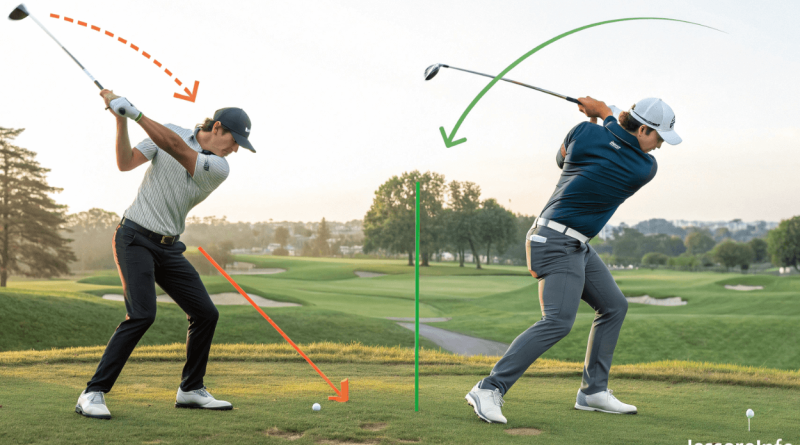Differences Between Iron and Driver Swings
If you are new to golf or are looking to refine your skills, you may have heard about the differences between iron and driver swings. But what does that mean? In this article, we will break it down in simple terms so you can clearly understand the differences between iron and driver swings and learn how to improve your technique with both clubs.
What We Cover In this Post
What Is a Golf Swing?
Before we go into the differences, let’s just give a quick definition of a golf swing. Your swing is the action you take when you hit the golf ball. It covers everything from your setup, to your backswing, to your downswing, to your follow-through. While the fundamentals remain the same, your swing will be slightly different depending on the club you are using.
Also Read: How to Finish Your Golf Swing Like a Pro
Key Differences Between Iron vs Driver Swings
First, let’s break down the distinctions between iron and driver swings into chunks or parts.
1. Ball Position
Driver Swing:
- Bring the ball up to your stance, slightly toward your front foot.
- This allows you to get the ball up.
Iron Swing:
- Place the ball in the middle of your stance, if not a fraction forward of center.
- This enables you to strike the ball from a downward angle with a compressing effect for greater control.
2. Swing Path and Angle of Attack
Driver Swing:
- You’re seeking a shallow angle of attack, in which you strike the ball while the club is moving slightly upward.
- This allows you to hit the ball high with less spin for added distance.
Iron Swing:
- Irons You want to “hit down on the ball” with irons.
- This creates backspin and helps you control the distance and direction of the ball.
3. Weight Shift
Driver Swing:
- In your backswing, your weight shifts to your back foot.
- On the downswing, you can move the weight forward, but not excessively. You get better rhythm and control with a smoother shift.
Iron Swing:
- You also move your weight, but more violently forward through impact.
- That way, you get a nice step down.
4. Swing Speed and Power
Driver Swing:
- The driver is also bigger and lighter, so you can swing it faster.
- The object is to travel the maximum distance with the control.
Iron Swing:
- The swing is generally less fast and more controlled.
- The emphasis is on accuracy, not range.
5. Club Design and Purpose
Driver:
- Largest club in your bag.
- Designed to drive the ball for distance.
Irons:
- Shorter clubs with smaller heads.
- (Used for approach shots, chips and control).
Your swing has to adapt because the clubs are so different.
Also Read: How to Hit a Draw in Golf
Mistake: Swinging Both the Same Way
One common beginner error is to produce the same swing for irons as drivers. This frequently results in mis-hits, topped or sliced shots.
- Pop-up is likely to result if you hit down on the ball with a driver.
- With an iron, swinging up can result in thin shots.
Stance, ball position and swing path should always be adjusted according to the club.
Also Read: How to Master the Golf Swing Fundamentals
Bonus Tip: Practice Separately
Experiment with practicing the driver and iron swings individually at the range. Concentrate on one style of swing at a time as your body adapts to the motions.
- To ensure your ball position is correct, try checking in with it using alignment sticks, or even a tee.
- Film your swings to see any differences.
- Don’t get ahead of yourself — smooth and slow wins the race.
Also Read: Golf Swing Mechanics
Knowing the distinction between an iron swing and a driver swing is very important in playing golf. The dynamics are similar, but even small adjustments in your stance, the position of the ball and the angle of the swing can determine the difference between being able to hit fairly well to not well at all.



